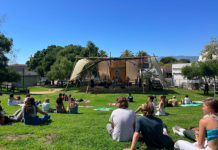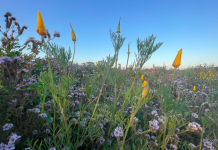Arturo Samaniego
Managing Editor
Over the past few years, with the emergence of the #MeToo movement and the increasing frequency by which sexual assault and harassment are discussed openly, there has been a re-evaluation of sexual norms and sexual consent occurring on college campuses and society at large.
In her research project, a digital zine titled “The Gray Area of Negative Sexual Experiences,” Haley Nolan-Cody, part of UCSB’s Class of 2019 and a communication and multimedia writing minor, explores sexual encounters that fall under a gray zone, defined as the area where consent and assault are blurred.
For the purpose of her research, Nolan-Cody defined sexual gray zones as, “sexual or intimate experiences that cannot be classified as completely non-consensual,” but also where one participant was not 100 percent comfortable and accepting of sexual advances.
The project centers on interviews with multiple female UCSB students who recount past sexual experiences they felt fell into a gray zone when it came to consent.
“I think creating a space for women who need to express what has happened to them and how they feel,” said Nolan-Cody in an interview with The Bottom Line , “and not taking away that space from people who do consider themselves victims is important.”
“Many of us do not want to realize that something that happened to us could fit the description of assault,” she continued. Nolan-Cody also believes that it may be difficult for some women to admit that a sexual experience was uncomfortable or negative.
Speaking on the origins of her research project, Nolan-Cody explained that she originally set out to look at misogynist microaggressions in everyday life.
It was upon reading Not That Bad by Roxane Gay, a nonfiction book about rape culture, that Nolan-Cody was inspired to look at encounters that do not necessarily fit under the category of rape but were still perceived in a negative light by an individual. She also took on the project after reflecting on her own experiences with sexual gray zones.
According to Nolan-Cody, the hypersexual, party environment present in Isla Vista is one reason why she believes UCSB students should be concerned with sexual gray zones.
Students Against Sexual Assault, a Santa Barbara nonprofit organization dedicated to eliminating sexual assault and harassment at UCSB and Santa Barbara City College, noted that UCSB is a unique community, because a majority of students live in off-campus housing in Isla Vista.
“Because of this [a majority of students living in off-campus housing], many sexual assaults take place off campus, especially in group settings such as parties,” said board members of SASA in a joint statement emailed to The Bottom Line.“An important aspect to helping combat this behavior is active bystander intervention.”
What surprised Nolan-Cody the most over the course of her research was the resilience participants displayed in the face of such negative sexual experiences.
“A lot of them used their experiences to understand their sexual boundaries and sexuality more,” Nolan-Cody said. “They worked through their feelings rather than living in fear, which for me was very inspiring.”
Elsa Granados, executive director of Standing Together To End Sexual Assault, a Santa Barbara non-profit that provides confidential counseling and support services to survivors of sexual assault, emphasizes the importance of listening to survivor experiences.
“We need to believe survivors, believe what they are telling us, believe the various elements of what they are saying, and provide them support,” Granados said in an interview with TBL.
If there is one thing Nolan-Cody hopes people take away from her research project, it is the need on everyone’s part to become more self-reflective and sensitive in regards to other individuals’ sexual comfort. “I hope everyone takes more sensitivity in their next relationship or sexual encounter,” said Nolan Cody, “to make their partners as comfortable as possible.”
















